Sacred garlic pear
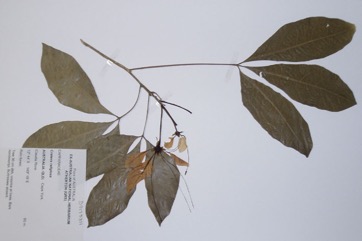
A tropical plant. It is native to SE Asia and Australia. It prefers moist soils and an open sunny position. It is drought and frost tender. It can tolerate temporary flooding. Found in waste places near streams and in areas of shrubs, near the sea from northern Luzon to Masbate and Palawan and probably also in Mindanao and Sulu Archipelago in the Philippines. In Nepal it grows to about 1500 m altitude. It needs a temperature above 15°C.
Also known as:
Abeech, Abiyuch, Apuch, Apus, Balai-lamok, Bannya, Barna, Barun, Bidasi, Bun, Dala, Dangla hantu, Garlic pear, Gudai, Ingigido, Jaranan, Kadoppsung, Kemantu hitam, Kum nam, Lunuwarana, Naiko, Sipligan, Siplekan, Temple Plant, Three-leaved caper, Ungudidi, Ungududu, Varuna
Synonyms
- Crateva brownii Korth. ex Miq.
- Crateva hansemannii K. Schum.
- Crateva macrocarpa Kurz
- Crateva magna (Lour.) DC.
- Crateva membranifolia Miq.
- Crateva religiosa var. vurnula (Buch.-Ham.) Hook.f. & Thomson
- Crateva speciosa Volkens
Edible Portion
- Seeds, Leaves, Flowers, Fruit
Where does Sacred garlic pear grow?
Found in: Africa, American Samoa, Asia, Australia, Bangladesh, Bhutan, Burkina Faso, Cambodia, Caroline Islands, China, Chuuk, East Timor, Fiji, FSM, Gambia, Hawaii, Himalayas, India, Indochina, Indonesia, Japan, Kiribati, Laos, Malaysia, Micronesia, Myanmar, Nepal, Nigeria, Pacific, Palau, Papua New Guinea, PNG, Philippines, Pohnpei, Polynesia, Samoa, SE Asia, Senegal, Solomon Islands, Sri Lanka, Thailand, Timor-Leste, Tonga, Truk, Vietnam, West Africa, Yap
Notes: There are 6 Crateva species. The tree is planted near graves and religious sites.
Status: Leaves are sold in local markets in Nepal.
Growing Sacred garlic pear
Cultivation: Plants can be grown from seed. Seed need to be sown while fresh. Plants can be grown from cuttings or root suckers.
Edible Uses: The fruit are edible. The tender leaves and buds are boiled and squeezed to lessen the bitterness then cooked as a vegetable or pickled. The flowers are pickled and eaten.
Production: A slow growing plant.
Nutrition Info
per 100g edible portion| Edible Part | Energy (kcal) | Protein (g) | Iron (mg) | Vitamin A (ug) | Vitamin c (mg) | Zinc (mg) | % Water |
|---|---|---|---|---|---|---|---|
| Leaves raw | 70 | 5.9 | 8.4 | - | - | - | 76 |
Sacred garlic pear Photos

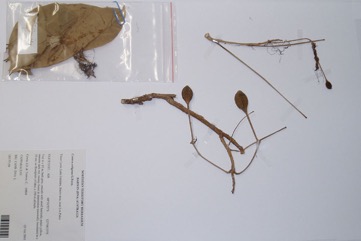
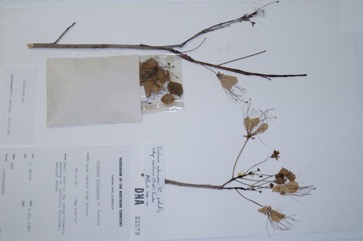
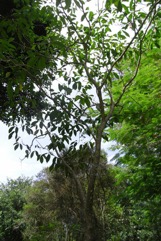
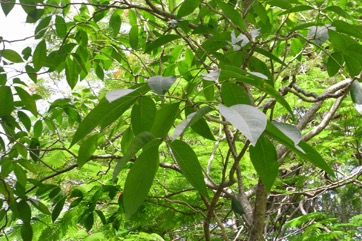
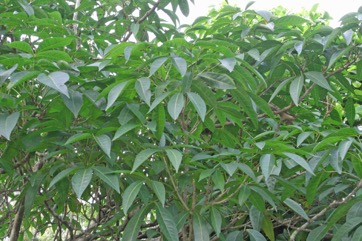
References
BARC, 2016, State of Biodiversity for Food and Agriculture in Bangladesh. Bangladesh Agricultural Research Council. (As Crateva magna)
Barwick, M., 2004, Tropical and Subtropical Trees. A Worldwide Encyclopedic Guide. Thames and Hudson p 135
Barrau, J., 1976, Subsistence Agriculture in Polynesia and Micronesia. Bernice P. Bishop Museu, Bulletin 223 Honolulu Hawaii. Kraus reprint. p 19 (As Crateva speciosa)
Belem, M., et al, 2017, Strategy of Conservation and Protection of Wild Edible Plants Diversity in Burkina Faso. ANADOLU 27 (2) 2017, 82- 90
Bodkin, F., 1991, Encyclopedia Botanica. Cornstalk publishing, p 296
Bojang, L., 1999, Non-wood Forest Products in The Gambia. EC-FAO Partnership Programme.
Brown, D., 2002, The Royal Horticultural Society encyclopedia of Herbs and their uses. DK Books. p 182
Burkill, I.H., 1966, A Dictionary of the Economic Products of the Malay Peninsula. Ministry of Agriculture and Cooperatives, Kuala Lumpur, Malaysia. Vol 1 (A-H) p 685 (As Crateva macrocarpa)
Cooper, W. and Cooper, W., 2004, Fruits of the Australian Tropical Rainforest. Nokomis Editions, Victoria, Australia. p 111
Cowie, I, 2006, A Survey of Flora and vegetation of the proposed Jaco-Tutuala-Lore National Park. Timor-Lests (East Timor) www.territorystories.nt/gov.au p 45
Dangol, D. R. et al, 2017, Wild Edible Plants in Nepal. Proceedings of 2nd National Workshop on CUAOGR, 2017.
Diss. pl. esc. 45. 1786
Eiadthong, W., et al, 2010, Management of the Emerald Triangle Protected Forests Complex. Botanical Consultant Technical Report. p 48 (As Crateva magna)
Elliot, W.R., & Jones, D.L., 1984, Encyclopedia of Australian Plants suitable for cultivation. Vol 3. Lothian. p 106
Facciola, S., 1998, Cornucopia 2: a Source Book of Edible Plants. Kampong Publications, p 72
Flora of Australia, Volume 8, Lecythidales to Batales, Australian Government Publishing Service, Canberra (1982) p 208
Forest Inventory and Planning Institute, 1996, Vietnam Forest Trees. Agriculture Publishing House p 89
Gardner, S., et al, 2000, A Field Guide to Forest Trees of Northern Thailand, Kobfai Publishing Project. p 45
Harris, F. M. A. and Mohammed, S., 2003, Relying on Nature: Wild Foods in Northern Nigeria. Ambio Vol. 32 No. 1. p 25-30
Hedrick, U.P., 1919, (Ed.), Sturtevant's edible plants of the world. p 226
Hibbert, M., 2002, The Aussie Plant Finder 2002, Florilegium. p 76
INFOODS:FAO/INFOODS Databases (As Crataeva speciosa)
Jacobs, 1960, Capparidaceae, Flora Malesiana, Ser. 1 Vol. 6(1) p 65
Jones D, L, 1986, Ornamental Rainforest Plants in Australia, Reed Books, p 209
Joshi, N., et al, 2007, Traditional neglected vegetables of Nepal: Their sustainable utilization for meeting human needs. Tropentag 2007. Conference on International Agricultural Research for Development.
Joshi, N. & Siwakoti, M., 2012, Wild Vegetables Used by Local Community of Makawanpur District and Their Contribution to Food Security and Income Generation. Nepal Journal of Science and Technology Vol. 13, No. 1 (2012) 59-66
Kanehira, R., 1931, An enumaration of the woody plants collected in Micronesia, Japanese Mandate (in 1929 and 1930). The Botany Magazine. Vol. XLV, No. 53 p 281
Khumgratok, S., Edible Plants in Cultural Forests of Northeastern Thailand. Mahasarakham University Thailand.
Llamas, K.A., 2003, Tropical Flowering Plants. Timber Press. p 151
Manandhar, N.P., 2002, Plants and People of Nepal. Timber Press. Portland, Oregon. p 174 (As Crateva unilocularis)
Martin, F.W. & Ruberte, R.M., 1979, Edible Leaves of the Tropics. Antillian College Press, Mayaguez, Puerto Rico. p 181 (As Crateva macrocarpa)
Massal, E. and Barrau, J., 1973, Food Plants of the South Sea Islands. SPC Technical Paper No 94. Noumea, New Caledonia. p 42 (As Crateva speciosa)
Menninger, E.A., 1977, Edible Nuts of the World. Horticultural Books. Florida p 11
Misra S. & Misra M., 2016, Ethnobotanical and Nutritional Evaluation of Some Edible Fruit Plants of Southern Odisha, India. International Journal of Advances in Agricultural Science and Technology, Vol.3 Issue.1, March- 2016, pg. 1-30
Monsalud, M.R., Tongacan, A.L., Lopez, F.R., & Lagrimas, M.Q., 1966, Edible Wild Plants in Philippine Forests. Philippine Journal of Science. p 450
MORTIMORE,
Peekel, P.G., 1984, (Translation E.E.Henty), Flora of the Bismarck Archipelago for Naturalists, Division of Botany, Lae, PNG. p 198, 197
Peters, C. R., O'Brien, E. M., and Drummond, R.B., 1992, Edible Wild plants of Sub-saharan Africa. Kew. p 78
Pham-Hoang Ho, 1999, An Illustrated Flora of Vietnam. Nha Xuat Ban Tre. p 599
Reis, S. V. and Lipp, F. L., 1982, New Plant Sources for Drugs and Foods from the New York Botanical Garden herbarium. Harvard. p 92 (As Crateva magna)
Thaman, R. R., 1987, Plants of Kiribati: A listing and analysis of vernacular names. Atoll Research Bulletin No. 296 (As Crateva speciosa)
Townsend, K., 1994, Across the Top. Gardening with Australian Plants in the tropics. Society for Growing Australian Plants, Townsville Branch Inc. p 141
Whistler, W.A., 2004, Rainforest Trees of Samoa. Isle Botanica Honolulu, Hawaii. p 38
World Checklist of Useful Plant Species 2020. Royal Botanic Gardens, Kew
www.efloras.org Flora of China Volume 7